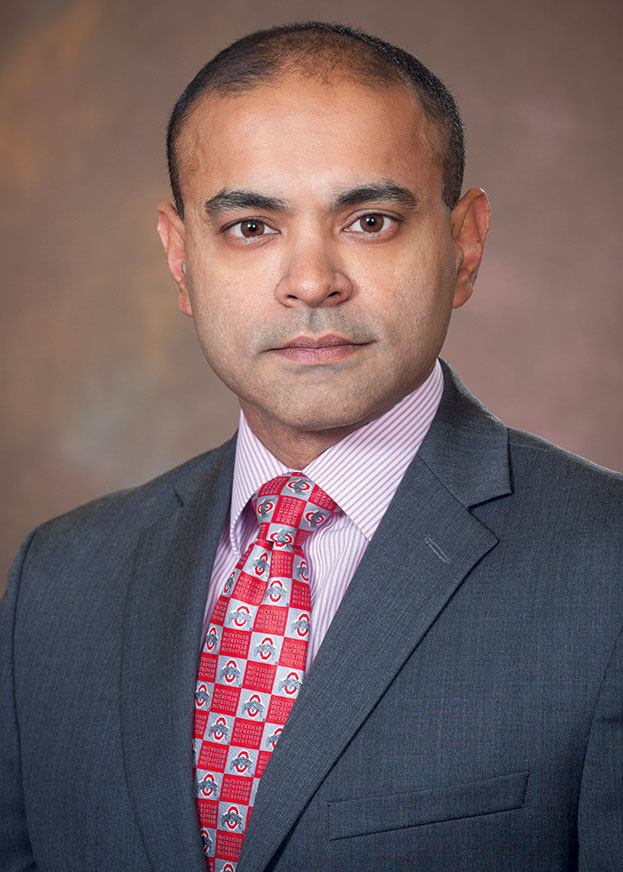From launching a 100% plant-based food truck to moving retail foodservice to the point where 50% of sales come from self-order devices, Zia Ahmed continues to keep The Ohio State University on the forefront of the trendline.
Ahmed’s role extends beyond his responsibilities at The Ohio State University to include three regional campuses in the state in Mansfield, Wooster and Newark. All told, he oversees more than 35 foodservice locations, including a central production kitchen/commissary; full-service, fast-casual and quick-service concepts; coffee shops; on- and off-premises catering; concessions; and delivery services.
 Zia S. Ahmed, Senior Director of Dining Services, The Ohio State University, Columbus, OhioAhmed was recognized with the International Foodservice Manufacturers Association’s 2020 Silver Plate Award, which he adds to a long list of honors and awards including several from the National Association of College and University Food Services. He also served as NACUFS president from 2014 to 2015.
Zia S. Ahmed, Senior Director of Dining Services, The Ohio State University, Columbus, OhioAhmed was recognized with the International Foodservice Manufacturers Association’s 2020 Silver Plate Award, which he adds to a long list of honors and awards including several from the National Association of College and University Food Services. He also served as NACUFS president from 2014 to 2015.
Q: What are the university’s plans moving forward given the challenges with COVID-19?
A: We’re examining every high touch point and eliminating services requiring customers to touch something that others have touched. For example, we’ll be taking a pause on everything self-serve. That includes salad bars, buffets and merchandisers displaying menu items. We aren’t allowing customers to pour their own beverages from any type of dispenser, including the large machines that offer multiple beverages. For coffee service, there will be no self-serve dispensers or condiments. Customers will place orders on a mobile app. A staff member will fill the orders, and customers will pick them up at a point of service. Of course, we’ll have more hand sanitizer throughout serveries and dining rooms, and we’ll be cleaning everything more frequently.
Q: How about the use of self-ordering kiosks?
A: This depends on what type of screens we could have that require no touch and little cleaning. Maybe voice recognition will be the way to go. For payment in terms of using cards, tapping cards to a reader is better than sliding. Cash transactions have been on their way out for some time, but maybe now they will be out for good.
Q: How will you manage mobile ordering?
A: We have a very well-established mobile ordering system. Going forward, we’ll work with a reservation system for our dining locations. We’ll accept a certain number of orders within a specific time period so these orders can be ready for pickup. We’re looking to add delivery services soon.
Q: You’ve built many demonstration kitchens and serveries with multiple platforms over the years. Will customers be able to watch culinary staff prepare food?
A: Food and preparation transparency will continue. At one of our restaurants with an outdoor patio, customers can watch chefs prepare food through a glass wall. They can interact with the chefs if needed, but it’s not necessary for the ordering process. This will serve as a model for other operations.
Q: Building community has been an essential focus for your college and dining services. With all the new restrictions, how will this continue?
A: We will continue to build communities, which are formed by people gathering and eating together. Students, faculty and staff can use their mobile devices to arrange to meet at specific places, pick up their meals and eat together in designated dining rooms and lounges that are set up for social distancing or find a bench outside. Now the Ohio governor’s directive says up to 10 people can be at a table. We’ll see if that works safely.
Q: How will you manage the quantity of menu items offered?
A: We are simplifying the menus and reducing the number of SKUs. Our menus will be more specialized. For example, before COVID-19 we offered six sandwiches at a unit. Now we’ll offer one and offer many opportunities to customize. We have a model for this at Mirror Lake Eatery. Before the renovation we offered a huge menu and after the renovation changed to a highly focused menu, cutting down the menu by 90%.
Now, we offer just chicken tenders, fries and shakes. It was super successful. Transactions and sales skyrocketed. But there must be a balance of menu items throughout campus.
Q: How will the central commissary kitchen, which produces blast-chilled menu items, factor into operations?
A: Our central commissary will continue to be a huge support for us no matter how streamlined our menus become. We’ll probably see an increase in prepared cold meals that students can order online, pick up or receive by delivery and heat up in the microwave ovens in their dorm rooms.
Q: Are you considering any other changes or additions to foodservice equipment?
A: We may have to repurpose air-curtain refrigerators because at least in the near future we won’t be offering grab-and-go menu items. We will be using more disposable containers.
Q: What do you see for budget expectations?
A: The elephant in the room is the budget. Refunds were given to students this past spring, and fewer students will be living on campus, so revenues will drop significantly. We’ll have to watch the foodservice budget. Our dining plan numbers may be down, and food costs will rise. Unfortunately, we can’t make changes in everything we’re now doing. For example, while we might like to add lockers and robots for food delivery we will have to wait until revenues increase.




